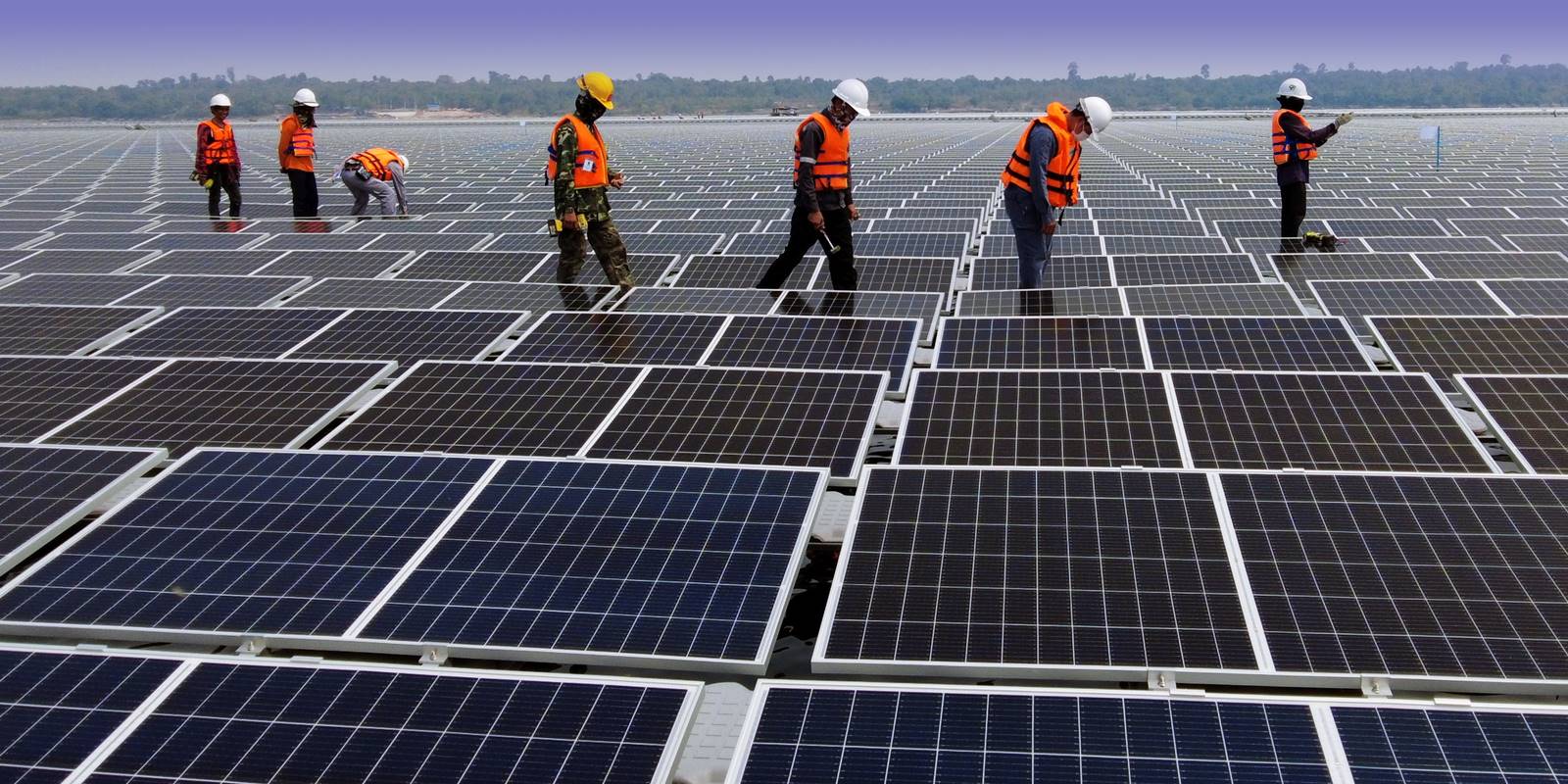Investment Opportunities in Renewable Energy for 2024
October 3, 2024

The renewable energy sector is experiencing a surge of activity and interest, making it a hotbed for investment opportunities in 2024. With the global push towards sustainability and the transition away from fossil fuels, investors are keenly looking at renewable energy as a growth sector. Here are some specific investment opportunities that are shaping the renewable energy landscape this year:
Solar Energy: The solar market has seen a brightening trend, with utility-scale solar capacity additions outpacing other generation sources. Small-scale solar generation also grew significantly, indicating a strong market for both residential and commercial applications. Investors can look into companies that produce solar panels, provide installation services, or develop solar farms.
Wind Energy: Despite facing challenges, wind energy remains a significant part of the renewable mix. Investment opportunities may be found in onshore wind projects, which continue to be competitive, especially when paired with storage solutions. Offshore wind, while facing cost pressures, is still a field with potential due to its large-scale generation capabilities.
Energy Storage: As renewable energy sources like wind and solar are intermittent, energy storage solutions are crucial for ensuring a stable supply. Technologies such as battery storage systems are vital for grid stability and are an area ripe for investment.
Clean Energy Infrastructure: The buildout of renewable energy infrastructure is a key area for investment, with regulatory boosts helping to address grid constraints. This includes transmission lines, substations, and other components necessary to support the increased deployment of renewable energy sources.
Green Bonds and Funds: For investors looking for a diversified approach, green bonds and funds offer a way to invest in a variety of renewable energy projects and companies. These financial instruments are designed to fund projects that have positive environmental and climate benefits.
Innovation in Renewable Technologies: Investment in research and development of new renewable technologies is crucial for the ongoing growth of the sector. Companies that are innovating in areas such as advanced photovoltaics, wind turbine design, or novel energy storage solutions present unique opportunities for forward-thinking investors.
Emerging Markets: Developing countries offer a unique opportunity for renewable energy investments. These markets often have abundant natural resources and a growing need for sustainable energy solutions, making them attractive for investors looking to make an impact with their investments.
The renewable energy sector in 2024 is not just about environmental sustainability; it’s also about economic viability and growth. With historic investments and a strong demand for clean energy, the sector is poised to overcome previous hurdles and continue its upward trajectory. Investors who are mindful of the trends and challenges within the renewable energy landscape can find numerous opportunities to contribute to a greener future while also seeking financial returns.
Investing in Renewable Energy: Navigating the Risks
The renewable energy sector, while promising, is not without its risks. Investors looking to capitalize on the transition to cleaner energy sources in 2024 must be aware of the potential challenges that could impact their investments. Here are some of the key risks associated with investing in renewable energy:
Market Volatility: The renewable energy market can be highly volatile. Factors such as policy changes, technological advancements, and fluctuations in commodity prices can significantly affect the sector’s stability. Investors must stay informed and be prepared for sudden market shifts.
Technological Risks: As renewable energy technologies evolve, there is a risk that current investments may become obsolete. The rapid pace of innovation can lead to newer, more efficient solutions, potentially devaluing existing technologies.
Regulatory and Political Risks: Government policies play a crucial role in the renewable energy sector. Changes in regulations, subsidies, or incentives can have a profound impact on the viability of renewable energy projects. Political instability can also lead to unpredictable changes in the regulatory environment.
Environmental and Weather-Related Risks: Renewable energy sources like wind and solar are dependent on weather conditions, which can be unpredictable. This introduces volume risk, where the actual energy generated may be less than expected, affecting revenue projections.
Financial Risks: The cost of developing renewable energy projects can be high, and securing financing can be challenging. As the era of cheap borrowing ends, higher financing costs can deter investment and slow down project development.
Supply Chain Risks: The renewable energy sector relies on a global supply chain that can be disrupted by geopolitical conflicts, trade disputes, or pandemics. Such disruptions can lead to delays, increased costs, or shortages of critical components.
Operational Risks: Managing renewable energy projects involves complex operations. There is a risk of technical failures, maintenance issues, or unforeseen operational challenges that can affect performance and profitability.
Despite these risks, the renewable energy sector continues to grow, driven by the global commitment to combat climate change and the increasing competitiveness of renewable sources. Investors can mitigate these risks through careful due diligence, diversification of investments, and staying abreast of market and technological developments.
For those considering investments in renewable energy, it is essential to conduct thorough research and possibly consult with industry experts. Understanding the specific risks and how they can be managed is crucial for making informed investment decisions in this dynamic and evolving sector.
Other Emerging markets (EM) investment opportunities to consider
Emerging markets (EM) are a beacon of potential in the global economic landscape, and as we look towards the future, certain sectors within these markets are showing particular promise. The year 2024 has brought a spotlight on a few sectors that stand out for their growth prospects and investment opportunities.
Technology and Pharmaceuticals: These two sectors are leading the charge, with significant investment interest and growth projections. The technology sector continues to thrive on innovation and the increasing digitalization of economies, while the pharmaceutical industry benefits from a growing demand for healthcare services and products, especially in the wake of global health challenges.
Infrastructure and Cybersecurity: With the digital transformation of economies, infrastructure development becomes crucial, and alongside it, the need for robust cybersecurity measures. These sectors are gaining traction as they provide the foundation and protection for the burgeoning digital economy.
Consumer Goods and Services: The expanding middle class in EMs is driving demand for consumer goods and services. This sector is expected to grow as disposable incomes rise and consumption patterns evolve, making it a promising area for investors.
Renewable Energy: As the world shifts towards sustainable energy sources, EMs with rich natural resources are well-positioned to capitalize on this trend. The renewable energy sector is expected to see significant growth, driven by both domestic needs and international agreements on climate change.
Agriculture and Food Production: With a growing global population, the demand for food is ever-increasing. EMs with agricultural potential are likely to see growth in this sector, as they expand their capabilities to meet both local and global food demands.
These sectors represent just a snapshot of the dynamic and diverse opportunities within emerging markets. Investors looking to tap into the growth potential of EMs would do well to keep an eye on these promising sectors as they navigate the investment landscape of 2024 and beyond. For those interested in the fastest-growing emerging markets projected through to 2029, data from the International Monetary Fund’s World Economic Outlook provides valuable insights.
The evolving landscape of emerging markets presents a complex but rewarding challenge for investors. By staying informed and agile, one can potentially reap the benefits of the growth trajectories these promising sectors offer. For a deeper dive into the emerging markets and their sectors, exploring comprehensive reports and market analyses can provide a more granular understanding of where the most significant opportunities lie.
Search
RECENT PRESS RELEASES
Related Post



